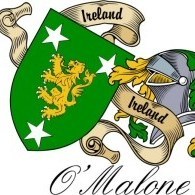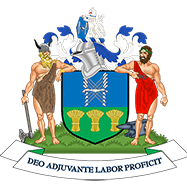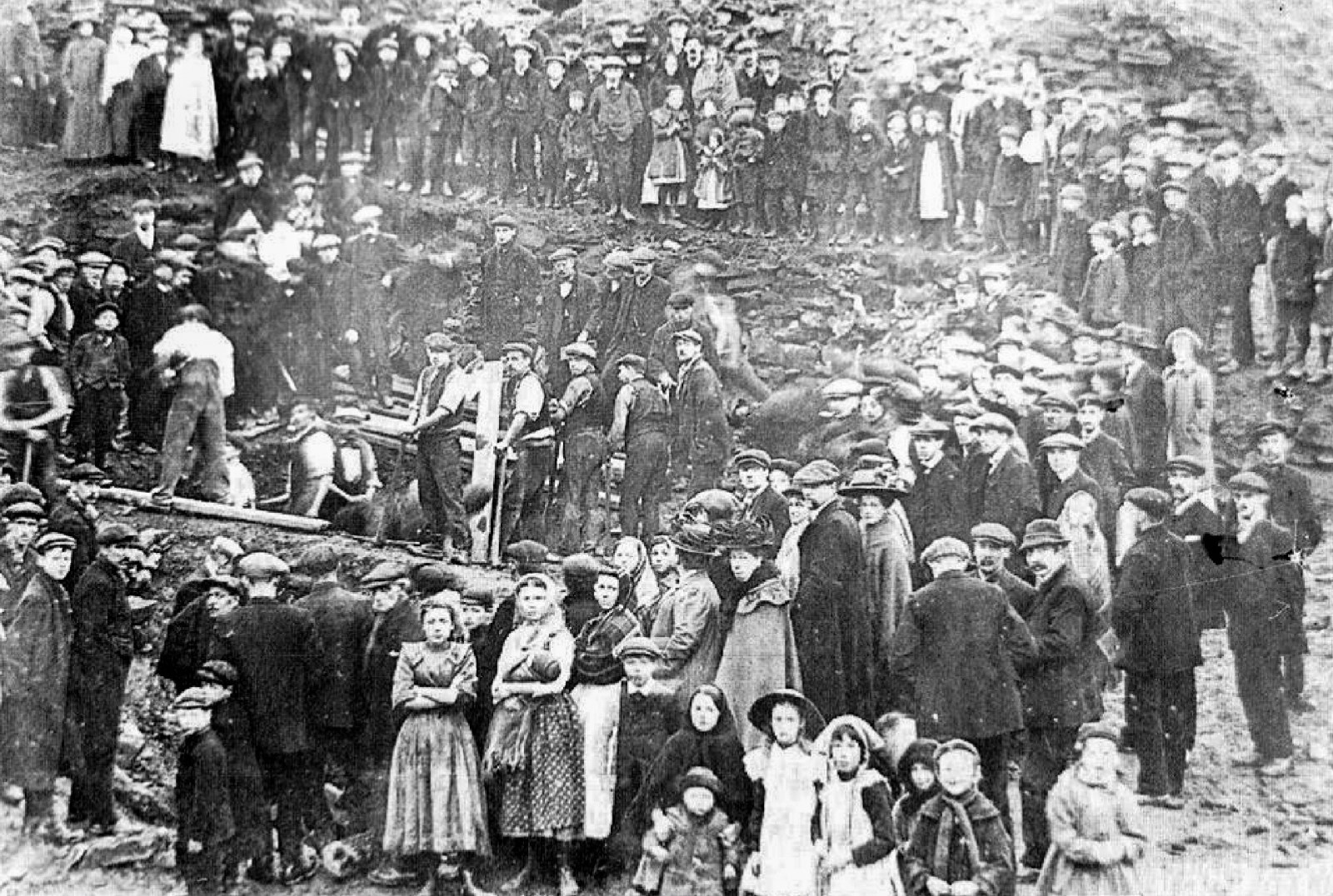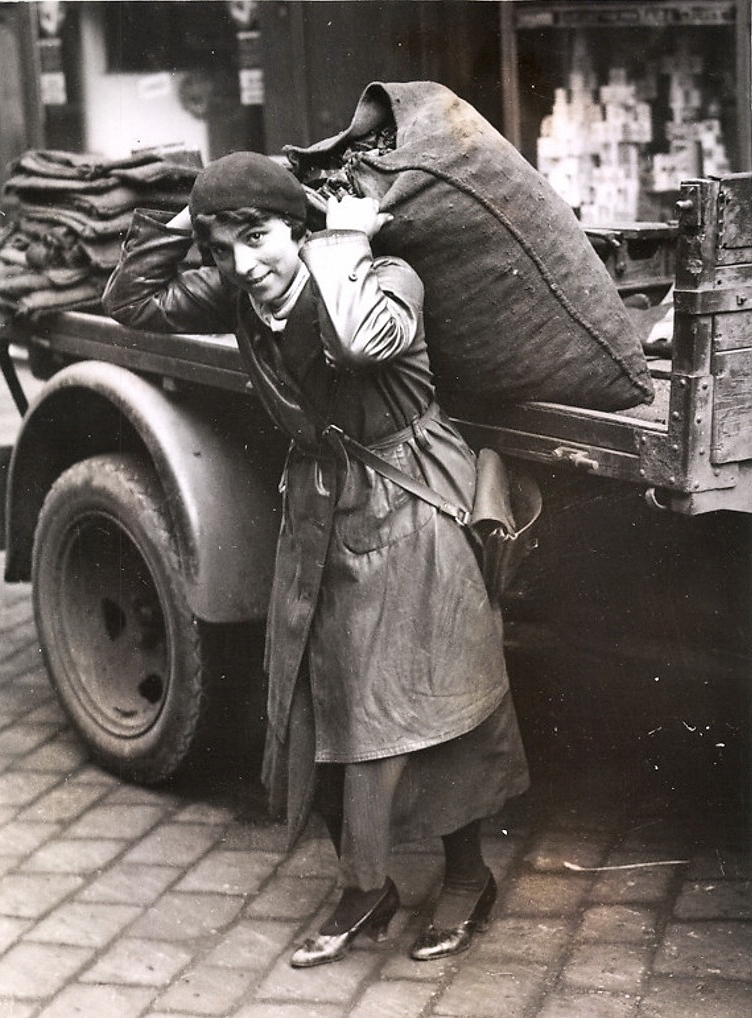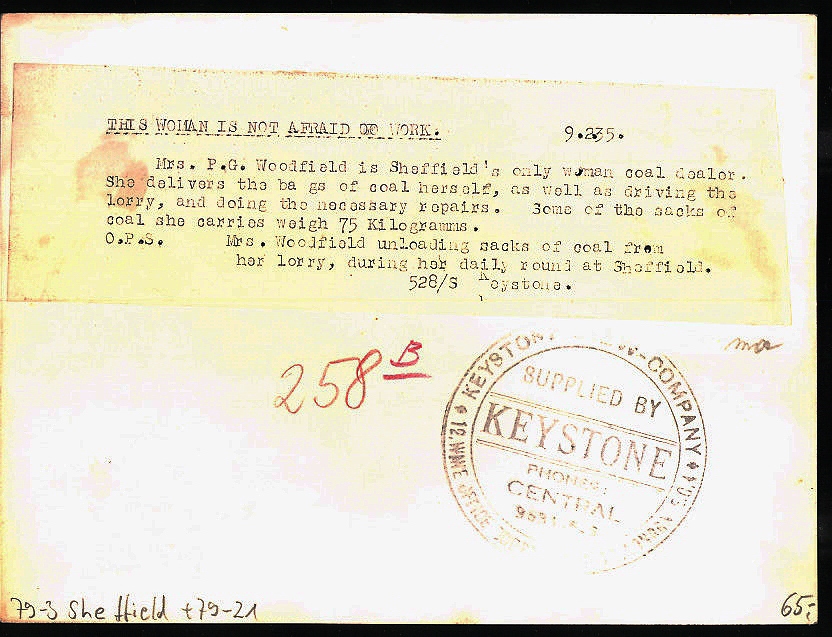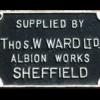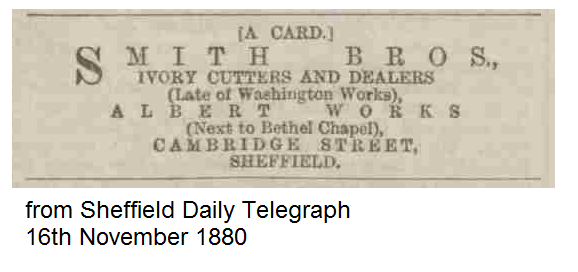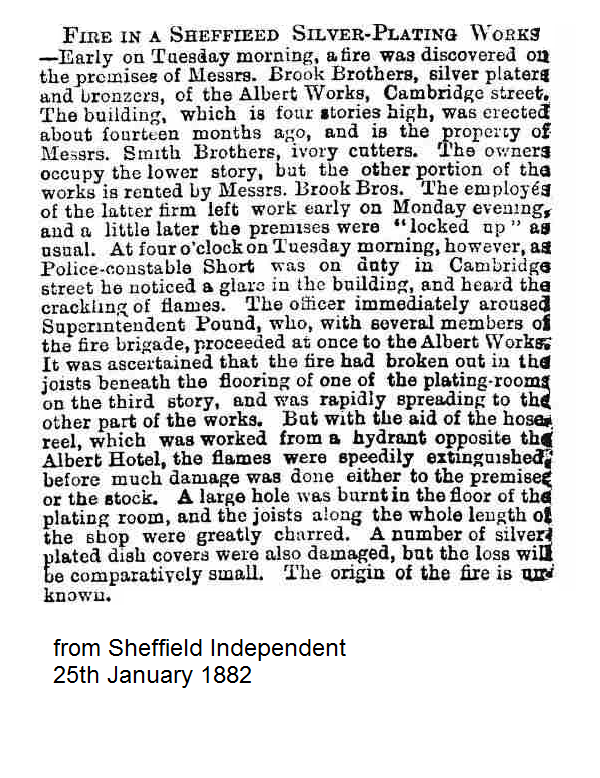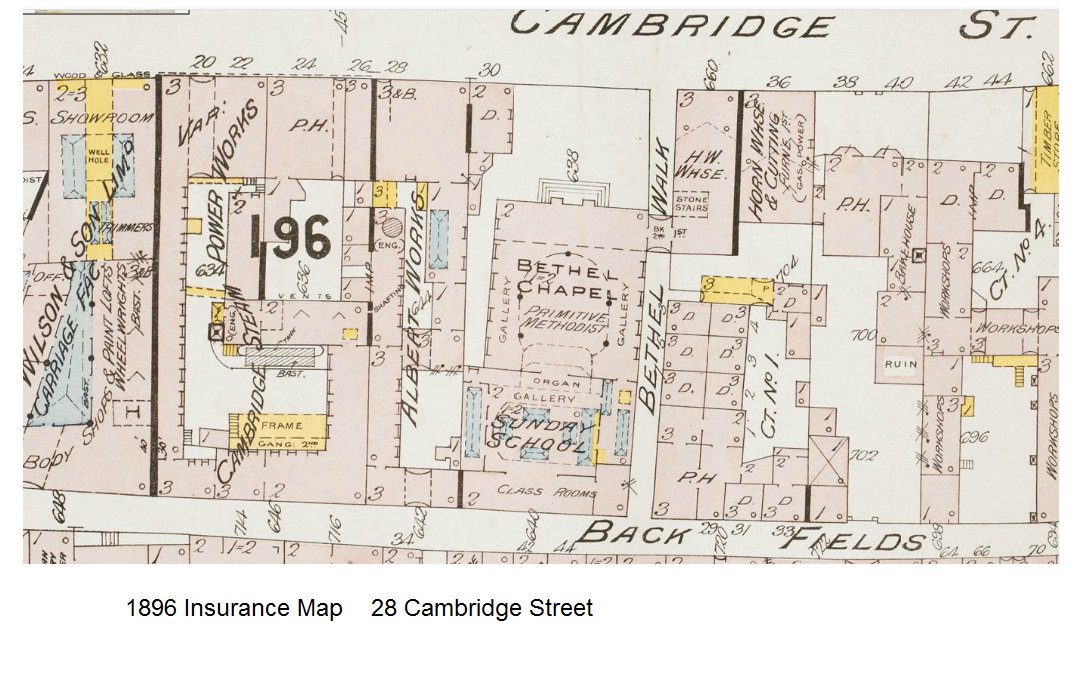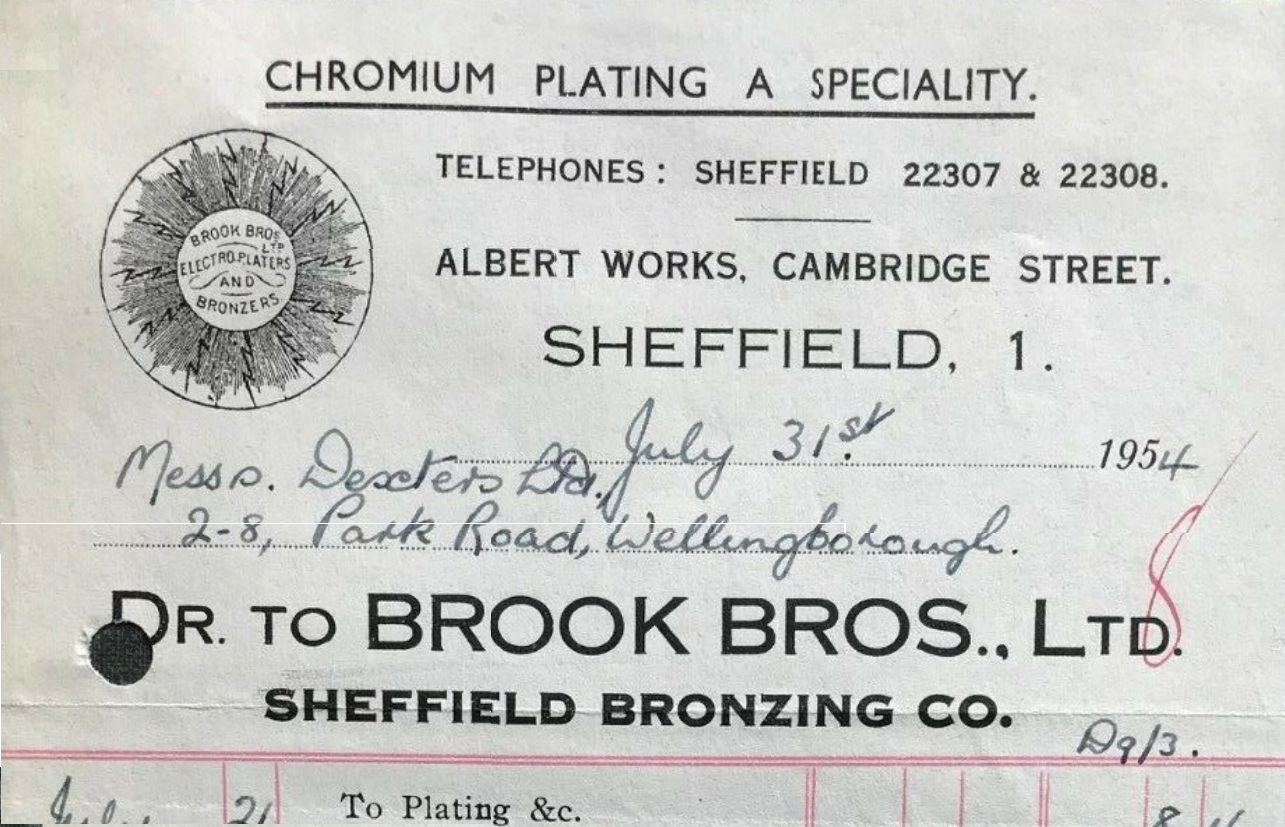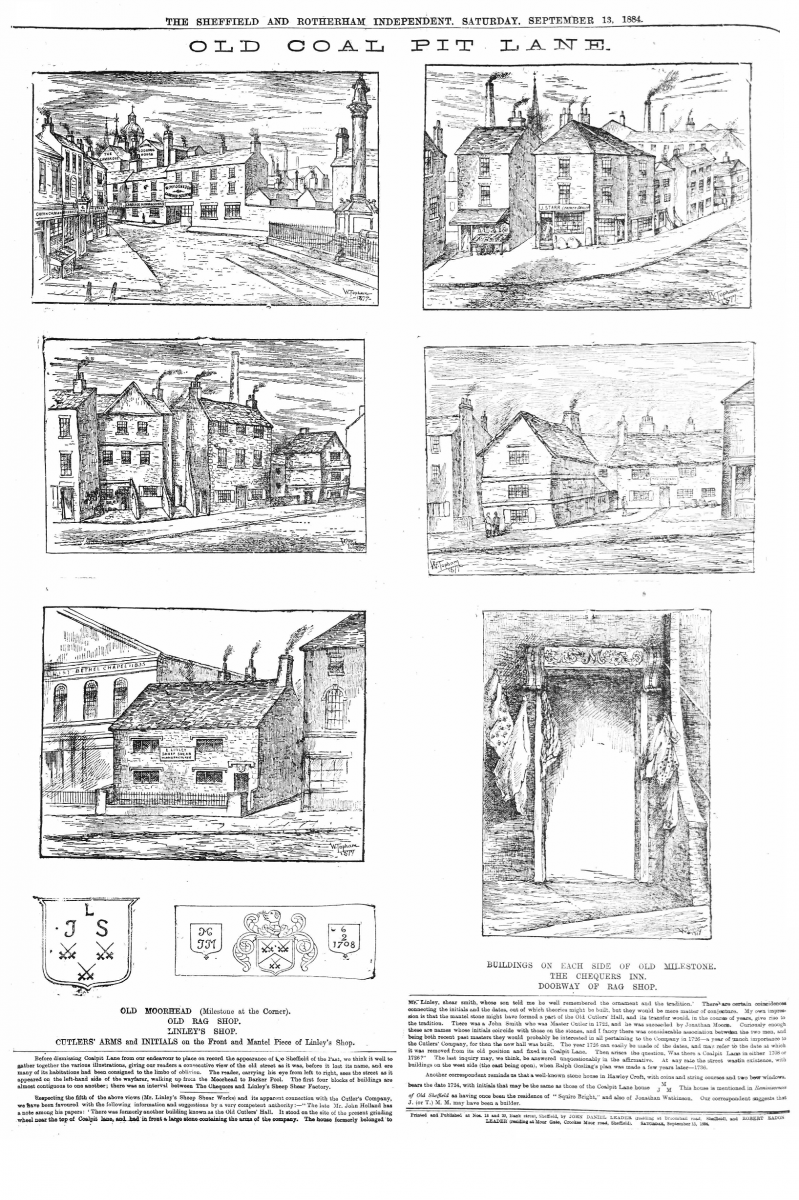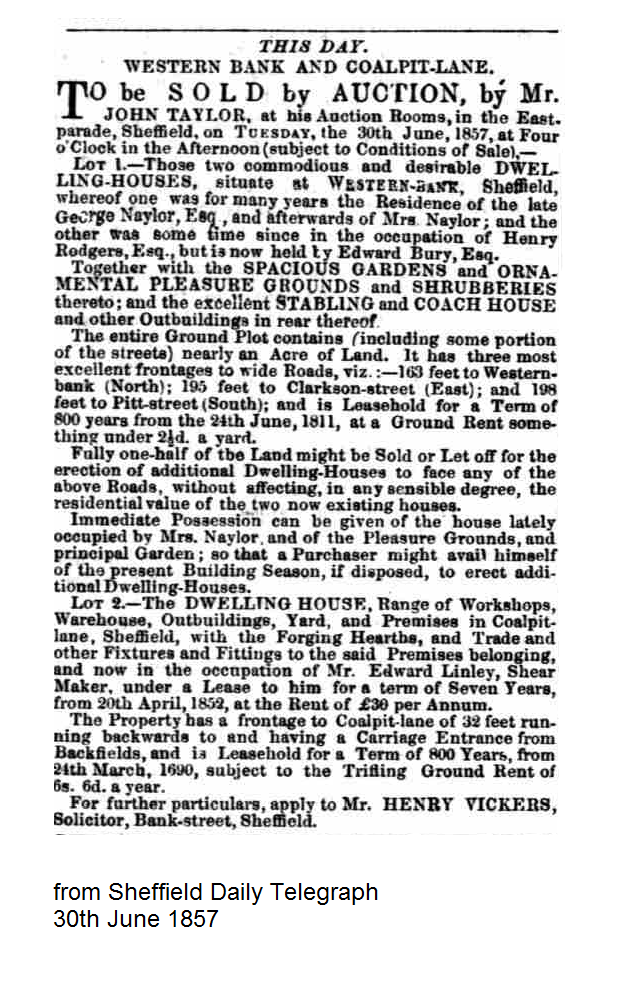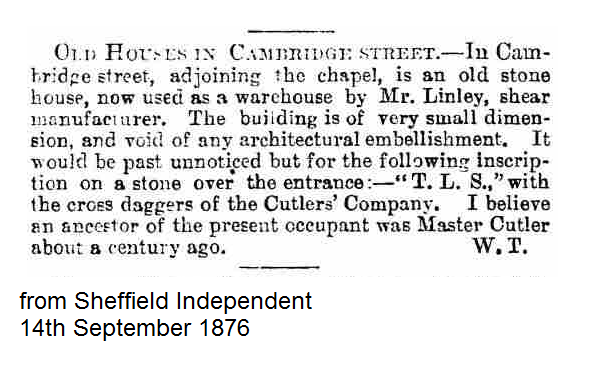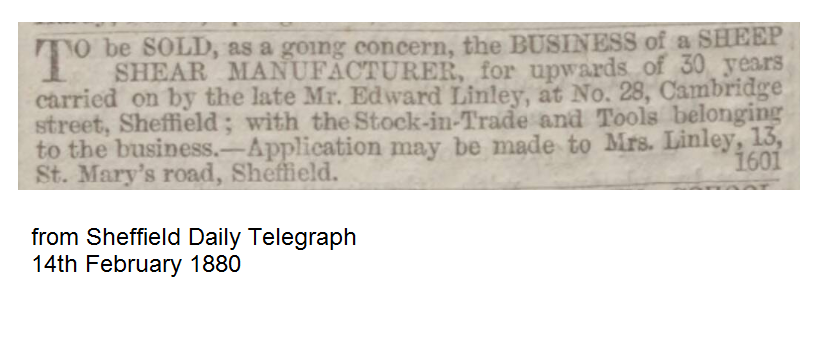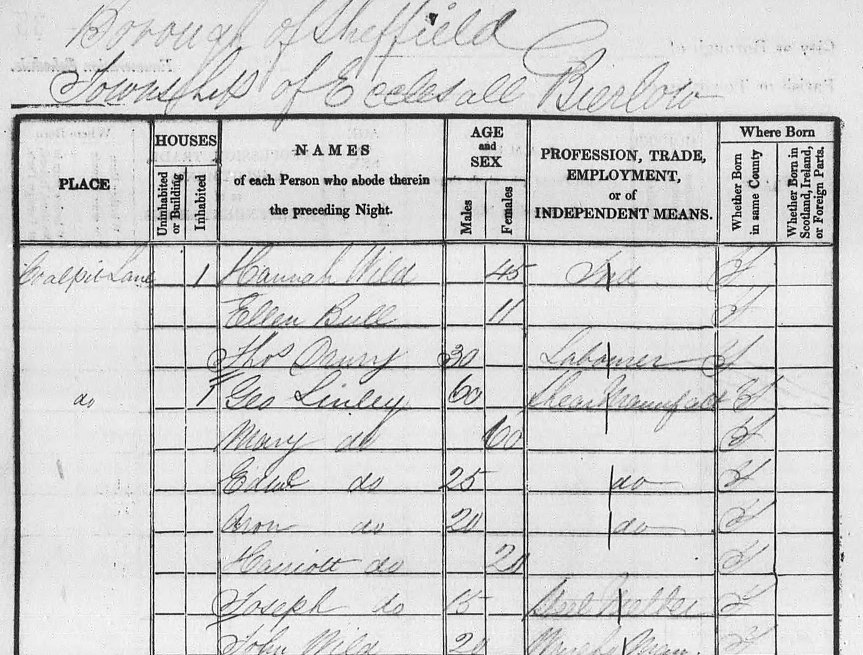Search the Community
Showing results for 'coal pit lane'.
-
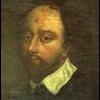
Wadsley Bridge mystery location
History dude replied to Sheffield History's topic in Sheffield History Chat
Is that bloke up near the top end of the street collecting horse muck, that can also be seen in the street? Or is it a coal dump? By the way that's one of the dirtiest roads I have seen on one of these old photos. -
The National Restaurants were first proposed in 1918 to minimise food waste and use of coal, and the initial ones were in London. The first one in Sheffield was opened in April 1919 in the old "Lion Restaurant" premises at the corner of Nursery Street and the Wicker. The food was provided by the council kitchens that had been set up to cook food for poor children. The restaurant had places for 200 customers, with self service rather than waitresses.
-

Sheffield Road Tinsley, Then and Now
lysandernovo replied to boginspro's topic in Sheffield History Chat
I worked for quite a few of my formative years down Lock Lane, just off Sheffield Road, by the side of the canal and was there from start to finish of the viaduct and subsequent alterations to the road network. The shops in those days were busy. A bank, a hairdresser ( Alf Swindells kept it. He was a man who "knew " everything and "everybody", A customer visited Rome on holiday. Alf asked if he had seen the Vatican? The customer replied that he had and,indeed, he had been blessed by seeing the Pope. "Did he speak to you"? enquired Alf. Yes he did" replied the customer. "What did he say? "...."Who cuts your bl**dy hair "? replied his custome.There was also a fish and chip shop...using coal for its range and dripping for its chips, a post office, a chemist and others beyond my memory. The first photo is looking toward the Ickles and Rotherham. There was a large pub on the right ( not the Plumpers). Sadly, its name eludes me but it was a Tennants/Whitbread house and I think it can just be made out in the distance. The second and third Plumpers were behind the photographer. Can't help with the loft windows but in the 50/60s it was said that many lofts in this part of the world had been knocked through to permit ( illegal) renting of bed spaces along a line of terraces... for the very many immigrant labourers employed in Tinsley's steel works. -
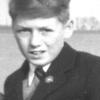
Pubs on the list but no known keeper
foreman87 replied to RichardB's topic in Sheffield Pubs and WMC's
Hi Richard, I can help with St Stephens Tavern, 11 St Stevens Road - now long demolished. This was for many years in my family. In 1891 it was kept by William and Jane Hinchliffe, followed by Edwin and Eliza Birks, followed - after 1900 - by my Grand parents Joseph and Edith Hudson. In the large pub yard my grandfather stabled his horses, kept pigs and ran coal and milk businesses; my grandmother Edith Mary Hudson ran the beer house whilst grandad worked at his carting business etc. -
Back in the early fifties, at home my Mother always bought the large green block of Fairy Soap, I can’t ever remembering any other soap until I was well into my teens, no perfumed soap for us, I can always remember a block seemed to last forever and the Mother saved the noggins that were left and she put them in a saucepan with some water then put them on the stove, after a couple of hours it was rendered down to something that resembled slime, she then put it on a shelf in the “ coal ‘ole” and when washing day arrived she fetched it out and dipped her fingers in and transferred an amount into the wash tub and away she went with the Peggy tub, this practice still went on even when she acquired her first Acme washing machine, she was very reluctant to change but eventually she succumbed to wash powder, Omo, Daz, Persil plus Landry bleach, so all in all the mundane washing day saw its own innovations over the years, today the young mothers “ don’t know their born” washing in, powder in receptacle ( always use powder as it stops the horrible smell in the washer) softener close the door and the timer does it’s job, no kitchen filled with a warm damp haze with the smell of Fairy Soap, happy days.
-
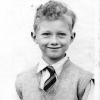
Sheffield bombed by a zeppelin ?
johnm replied to Sheffield History's topic in Sheffield History Chat
Here is the story of my gt grandma, Elizabeth Bellamy's death in the Zepellin raid. ELIZABETH BELLAMY NEE PIGOTT – STORY OF HER DEATH Elizabeth Pigott (my gt grandma) was born in Sheffield in 1859 to Hilderbert De Lacey Pigott & his wife Elizabeth nee Gregory. Hilderbert was a grinder born in Hatfield, Yorks but his family moved to Sheffield in the 1830's. He married Elizabeth Gregory 20 Dec 1849 in Sheffield. They had 11 children of which Elizabeth was the 5th. After school, Elizabeth got a job as a cigar maker & met William Bellamy, a blacksmith in the steelworks. They married 26 Dec 1880 at St Thomas' church, Brightside. Initially, the couple lodged with Elizabeth's brother Hildabert, as her father had died. Soon afterwards the couple moved to their own house at 31 Lucas St. & subsequently lived 148 & then 150 Petre St before moving into 43 Writtle St. Elizabeth gave up work when the children came along; Hilda 1881, Erwin 1885, Amy 1886, Lilian 1889, William1890, Harold 1893, Elsie 1894 & Albert1901. Lilian, my grandma, became a tea room waitress on leaving school & met & married William Morris (a gas fitter) on 25 Dec 1914 at All Saints Church. They lived with Lilian's parents at 43 Writtle St (off Sutherland Rd) & had their first child, my mother Marjorie Morris on 2 Oct 1915 who was born at 43 Writtle St. Shortly after midnight on night of 25/26 Sept 1916 the Bellamy family were at home at 43 Writtle St. The air raid alarms had sounded & Elizabeth got up & ran to the bedroom where my 11 month old mum Marjorie lay in a cot. As Elizabeth passed the bedroom window shrapnel from a high explosive bomb which had landed on the road outside, went in through the window & inflicted terrible injuries to her shoulder & back exposing her spinal column. She was taken to the Royal Hospital but died 3 hours later. Thankfully my mum was uninjured. Elizabeth was buried in Burngreave Cemetery on 29 Sep 1916. Husband William arranged for the following inscription on her headstone "Blessed are the pure in heart. In loving memory of Elizabeth, the beloved wife of William Bellamy who was suddenly called away on 26 Sept. 1916 age 57 years. "A bitter grief, a shock severe, to part with one we loved so dear". The raid was carried out by Zeppelin L22 commanded by Kapitänleutnant Martin Dietrich which arrived over the city at about 12.20 am. In its raid on Sheffield it dropped 20 high explosive bombs & 30 incendiary bombs. 28 people were killed & 19 injured. Nine houses & a chapel had to be demolished & 62 houses were damaged. It appears the house at Writtle St must have been damaged because for the following 2 years or so William lived elsewhere. On 12 Oct 1918, William Bellamy married again, to Annie Elizabeth Hodkinson (a widow). In 1925 a Sheffield Directory shows him back living at 43 Writtle St so the house must have been repaired in the meantime. An account of the air raid is given below. The Sheffield Daily Telegraph of the same day reported. "The husband of one victim said his wife was rushing across the bedroom to get at her child when a bomb struck her in the back." A memorial put up on Effingham Rd. by chairman of Baltic Steel co )which was hit in Zeppelin raid on night of 26 Sept 1916 when 36 bombs were dropped between Burngreave Cemetery and Darnall) states : "Lest we Forget" . On September 26th 1916 Nine Men, Ten Women and Ten Children Were Killed by a German Air Raid on Sheffield. One of the bombs fell close to this spot. The Raid During the early afternoon of Monday 25 September 1916, five Zeppelins took off from their bases in northern Germany with orders to attack England. Three of the airships were heading for London and the South of England. The remaining two Zeppelins, L-21 and L-22, respectively commanded by Kapitänleutnant Frankenburg and Kapitänleutnant Martin Dietrich were to attack the North Midlands industrial towns. Dietrich's target was Sheffield. Many of Britain's leading armament and munitions firms were based in Sheffield; it was therefore a prime target for the German Zeppelins. Indeed, Sheffield had been the intended target on previous raids, but on each occasion the attacking Zeppelins failed to find the city. L-21 crossed the Lincolnshire coast at 9.45 pm, about 45 minutes ahead of Dietrich in L-22. It was heading in the general direction of Sheffield and triggered an air raid warning. Throughout the city electric 'buzzers' warned people to take cover. This was Sheffield's 14th air raid warning, but so far the city had escaped attack. For some the warnings created a sense of panic and they fled to the city's parks and woods hoping they would be safe from falling bombs. Many followed the official advice and took refuge in their cellars. Others saw the warnings as a spectacle believing that Sheffield's inland location and surrounding hills would make it impossible for a Zeppelin to find the city at night. Shortly after the warning was given, Thomas Wilson, a 59 year old engineer's fitter of 73 Petre Street, came out of his house to and chatted with neighbours. He was sceptical of the Zeppelin threat and told a next-door neighbour that they would never come to Sheffield. Ninety minutes later he became one of the raid's first fatalities. At 10.56 pm, as L-21 approached Sheffield, Captain Edward Clifton, Royal Flying Corps, took off from Coal Aston airfield in a BE 2C biplane nightfighter to intercept it (the old airfield site now lies beneath the modern Jordanthorpe estate). The weather over Sheffield was cloudy with poor visibility. Finding the Zeppelin in such conditions was hopeless and Captain Clifton attempted to land back at Coal Aston, but crashed on high ground. Although the aircraft was damaged he escaped injury. L-21 turned away just before reaching Sheffield and skirted around the north of the city before heading off to drop its bombs in Lancashire. About 12.20 am L-22 arrived over the city. At 585 ft 5 in long with a maximum diameter of 61 ft 4 in, even by modern aviation standards its size was impressive. The airship was constructed from an aluminium framework covered with waterproofed cotton. Within the framework were eighteen gas cells filled with hydrogen, a lighter than air gas, which kept the machine in the air. It was powered by four petrol engines and had a top speed of around 60 miles per hour. The Zeppelin flew across the city to the Fulwood and Redmires areas and then turned east towards Attercliffe. L-22 accelerated to full speed and began zigzagging its way across the city, a tactic employed to make it a more difficult for defending anti-aircraft guns to score a hit. The first bombs, two incendiaries, were dropped around 12.25 am and fell in Burngreave Cemetery, near to the Melrose Road entrance. Other than scorching some grass and a notice board no damage was caused. The first high explosive bomb fell in Danville Street killing 49 year old Frederick Stratford, who was struck by shrapnel whilst in bed. In nearby Grimesthorpe Road a bomb fell on No 112 and exploded killing 76 year old Ann Coogan and her 56 year old daughter, Margaret Taylor. At 73 Petre Street, Thomas Wilson, who had retired to bed, heard the exploding bombs and rushed to his bedroom window. His timing could not have been worse. As he looked out a bomb fell on a nearby outbuilding and exploded. He was struck on the chin by a bomb fragment and died instantly. The next bomb, a high explosive, fell on Writtle Street (now Maxwell Way). Shrapnel from the bomb hit 57 year old Elizabeth Bellamy in the back as she rushed across her bedroom. She was taken to the Royal Hospital, off West Street, where three hours later she died from her injuries. Two high explosives bombs fell in Cossey Road causing dreadful loss of life. The first landed on a block of three terrace houses comprising No's 26, 28 and 30. In No 28 Alice and Albert Newton were killed as they lay in bed. Luckily, their infant son was spending the night with his grandmother in a nearby street and was unharmed. George and Eliza Harrison lived at No 26 with their two daughters and two grandchildren. After the warning had sounded they were joined by their neighbours from No 24, William and Sarah Southerington. George and William stayed in the living room while everyone else took shelter in the cellar. All eight were killed in the explosion. The Southeringtons' house suffered only minor damage and had they stayed at home would probably have survived. The second Cossey Road bomb landed on No 10 killing Levi and Beatrice Hames and their one year old son. In Corby Street (now Fred Mulley Road) a high explosive bomb demolished No 142 killing Selina and Joseph Tyler and their five children. The same bomb also killed 11 year old Richard Brewington of 134 Corby Street and fatally injured Martha Shakespeare of 143 Corby Street, who died later in the day in the Royal Infirmary, Infirmary Road. The last casualty of the raid was in Woodbourne Hill where William Guest, a Corporation wagon driver, was killed in the street by a bomb as he tried to warn the occupants of a house that they were showing a light. The final few high explosive bombs fell near to Manor Lane, but did little damage. The Zeppelin then flew over Darnall and Tinsley Park Colliery where it dropped several incendiary bombs, before heading out to sea and returning safely to Germany. Although a number of anti-aircraft guns were located around Sheffield, cloud prevented their crews from seeing the Zeppelin. A gun sited at Shiregreen was the only one to take action. It fired two rounds in the approximate direction of the airship without result. -

Potential bomb shelter in our garden?
deltics replied to mounsey's topic in Sheffield War Years and The Sheffield Blitz
I never knew the guy but,yes, sounds about right. Once upon a time we would have accepted people like that and regarded them as part of life's rich tapestry. Nowadays, there's a Social Services 'care plan' in place and everything they do is monitored. Got to keep the loonies on the path ... So YOU'RE the vandal who pulled down a perfectly good house! Outside toilet, well in t'yard, cellar for coal, cold tap in the kitchen, Yorkshire pudding sizzling on the range (for starters, fills you up so you don't want as much meat course...) Luxury beyond belief! Daft thing is, nostalgia and being a kid at the time and all that aside, I'd move back now if I could. 'Er indoors could do with a bit exercise, laying fires and the like ... Chris, pragmatic as ever -
1912 Accident at Ecclesfield Quarry in Townend Road. Local lad Clifford Robinson , who was deaf, was killed by a falling rock when going down a well shaft looking for coal.This was more of a tragedy as he was the only breadwinner for his widowed mother and family. 20 experienced miners worked in relays to reach the lad but were unable to save him. One called Lawrence Barnes received a Bronze medal of the Royal Humane Society for his heroic efforts.
-
Used the pub a few times when, back in the early 1980s, the landlord was a coal man ( or had been) from the Darnall area/
-

Sheffield's only woman coal dealer (picture)
Edmund replied to Alastair's topic in Sheffield History Chat
The standard coal sack weighed 1 cwt, and some dealers also sold coal by the half sack - I guess the 75kg was poetic licence. She would struggle with a half sack in those heels, across cobbles! -

Sheffield's only woman coal dealer (picture)
Alastair replied to Alastair's topic in Sheffield History Chat
I wondered about 75kg too and I would be surprised if she could lift that alone. I know I couldn't. Good info on the Keystone View Company. I had assumed it was something to do with the Keystone Press Agency who still exist in some form. The photo appeared on the site of a German postcard dealer so maybe it had been sent to a German publishers for use, which may explain the use of kilograms. It's still for sale and not cheap, but it's a striking image that could make someone some money. https://www.delcampe.net/en_GB/collectables/photography/photographs/professions/photo-keystone-ansicht-sheffield-mrs-p-g-woodfield-shefields-only-woman-coal-dealer-887764159.html -

Sheffield's only woman coal dealer (picture)
Alastair replied to Alastair's topic in Sheffield History Chat
Thanks to Hugh Waterhouse on Facebook for the following. She was following the tradition of taking her husband's name - Ellen Florence HURDITCH married Percival George WOODFIELD on Christmas day 1930 in Owlerton. Her father was a coal merchant. Percy was a 'motor driver' and I think (from a court case) that he worked for a coal merchant in the 1920s. In 1939 Percy was a driver for a chemical factory and they lived in Farfield Road. -
From the reverse: THIS WOMAN IS NOT AFRAID TO WORK Mrs. P.G. Woodfield is Sheffield's only woman coal dealer. She delivers the bags of coal herself, as well as driving the lorry, and doing the necessary repairs. Some of the sacks of coal she delivers weigh 75 Kilogramms. Mrs Woodfield unloading sacks of coal from her lorry during her daily round at Sheffield.
-
Further to your enquiry, these names are from the Sheffield directories that I have. DAISY BANK 1845 Clayton Wm. Henry. valuer and broker, 22 Paradise sq; h Daisy bank Hancock Wm. spring knife manufacturer, Daisy bank Mason Wm. file manufacturer, court 80 Whitecroft; h 103 Daisy bank Powell George, fork manufacturer, Daisy bank Smilter John, shopkeeper, 71 Daisy bank Smith John, razor manufacturer ; house Daisy bank Sorby Ann, dressmaker, 79 Daisy bank Turton Thomas, warehouseman, 101 Daisy bank Wood John, bookkeeper, Daisy bank ----------------------------------------------- 1849 Birks Thomas, springknife manufacturer. (fish-hook, &c.) 41 Daisy bank Bishop Samuel, cowkeeper, Daisy bank Clayton Wm. Henry. valuer & broker,22 Paradise square; h Daisy bank / maybe brothers Clayton John, auctioneer, valuer, bailiff, and furniture broker, 26 Paradise square; house Daisy bank Cooley Daniel, collector for Infirmary, & Mission school, 93 Daisy bank Hancock Wm. and Sons, springknife manufacturers, Daisy bank Mason Wm. file manufacturer, et 80 Whitecroft; h 103 Daisy bank Powell George, fork and steel maker and cutlery founder, Daisy bank ---------------------------------------------- 1856 Terry Stanley. postman, Daisy bank Clayton Wm. Henry, valuer, 22 Paradise square; h Daisy bank Fleming Mr. Charles James, senior. Daisy bank Hancock Wm. & Son, spring knife manufacturers,Daisy bank Newbould Edwin, table knife mfr. US Campo lane; h 58 Daisy bank Newbould Henry. & Joseph, scissor mfrs. (Geo. & Sons;) h Daisy bank Oxley Joseph. shopkeeper. and coal dlr. Daisy bank (Wm. Jnr) Cemetery rd Pearson John N. engraver's tool mfr. Brownell st; h Daisy bank Powell George, fork maker and cutlery founder, Daisy bank Wood John, traveller, Daisy bank 11 John (jnr) 45 Milton street ------------------------------------------ 1862 Sheldon Wm., Daisy bank Hancock Wm. & Son (Geo.), Daisy bank DAISY WALK Carr Thomas, cowkeeper, Daisy walk Oxley Joseph, shopkeeper and coal dealer,Daisy walk Scholey Robert, bone button and mould mnfr., 19 Daisy walk --------------------------------------- 1879 DAISY :BANK. (Upper St.Philip's rd.) 1 Hall Henry. clock cleaner & confectioner Courts 1 and 3 Bk.43 Cowley Reuben, cartowner 24: Law Thomas, shopkeeper 28 Atkin Mrs Charlotte, dressmaker Court 2 DAISY WALK. (186 Upper Alien st.) 5 Pepper Thomas, shopkeeper Court -Nelson John, coal dealer Court 3 25 Horton Benjamin, cowkeeper Court 5 31 HolIingsworth ·Wm. shopkeeper 39 Goddard William, shopkeeper Courts 7 and 9 71 Gillott Joseph, table blade forger DAISY :BANK. (Upper St.Philip's rd.) 1 Hall Henry. clock cleaner & confectioner Courts 1 and 3 Bk.43 Cowley Reuben, cartowner Court 2 - Allen George, clock cleaner Berry Joseph, spring knife manufacturer Court 4 34 Pollard Miss Lydia, shopkeeper Court 6 Fullelove Mark, file manufacturer Hartley John & Son, cutlery mfrs Hartley John (J. & Son) Hartley Alfred (J. & Son) Wilde Thomas, spring knife mfr Copley Henry, spring knife mfr Fawcett street 70 Oxley Joseph, coal dealer ......... Upper St. Phillips.~ road ---------------------------------------- 1911 DAISY BANK. (117 Upper St. Philip's road.) '{No thoroughfare.) 1 Barker James Henry, herbalist 37 Powell Fredk. Wm. shopkeeper Court 1 Court 3 Atlcin William Henry, coal dlr 18 Sally George, drainer 30 Moulds John, scissors borer &hardener Court 2 50 Oxley Thos. spring knife cutler 54 Swindell Miss Mary A. dress maker DAISY WALK. (188 Upper .Allen street.) Court 1 17 N ad in Mrs. Sarah Ann, coal dlr Court 3 25 Lindley John Arthur, shopkeeper Courts 5 &: 7 Porton Henry, file cutter Court 9 ...... Upper St. Philip's road ..... . BROOMPARK Mission room 93 Watts Luther, caretaker Court 4 Court 6 38 Wheelhouse G. & Co. drysalters Fawcett street ..... Upper St. Philip's road ..... . Daisy bank 8 Blossom John householder : 10 Blossom James. friendly societies' accountant 14 Lee Joseph Wm. car conductor Court 1 16 Shepherd Arthur, householder 18 Robinson John, horsekeeper 20 Abbott Arth. Henry, policeman Fulton road Aizlewood road
-
Some adverts for Sheffield based businesses from "A Technical Survey of the Iron & Steel Works of Appleby-Frodingham Steel Company", published by Iron & Coal Trades Review, 1955. Some are to be expected, as the companies are part of The United Steel Companies Limited, but plenty are not. Abrafact Brightside Foundry& Engineering Cooper & Turner Darwins Group Davy United (this advert was across two pages) The Sheffield Twist Drill & Steel Company
-
From "A Technical Survey of the Iron & Steel Works of Appleby-Frodingham Steel Company" published by Iron & Coal Trades Review in 1955:
-
Another one I thought of was pit prop tapper, I am not sure of the correct title but a friend of mine did this job about fifty years ago, tapping the props down a coal mine, the sound he heard told him if the props were tight and doing their job safely.
-
Thomas Myers beer-house was the Travellers Rest, Luke Armfield was the Miners Arms Thorpe Hesley and Enoch Morrell was at the Arundel Inn, Ecclesfield Common. Enoch Morrell was born on 6th August 1807 at Ecclesfield son of John, and died on 12th February 1865 at Ecclesfield aged 59. In 1841 he was an Agricultural Labourer living on Ecclesfield Common with his wife Harriett, and children Hannah 5 and Alfred 1. By 1851 he was a twine maker at Jackson lane Ecclesfield with wife Harriett, daughter Hannah, son Alfred and lodger Thomas Ellis also a Twine Maker. During the 1850s Enoch branched out into the beer trade, and by 1861 his main occupation was as a publican at Ecclesfield Common, with wife Harriett and son Alfred, a file grinder. His daughter Hannah (baptised 17th September 1837), married Thomas Ellis the roper, who had been working with her father Enoch. They married at Rotherham on 1st May 1853. Enoch applied for a spirits licence in 1859 and 1860 without success, as the Travellers at the other end of the Common opposed his licence application. The 1859 application was reported in the newspaper as being for the Army Hotel, but this may have been an error by the reporter. During his application in 1861 his solicitor stated that “the house, which had been built by the applicant, was the most commodious and well-adapted building for a public-house in the parish of Ecclesfield. There was stabling for eight horses, and a large space of ground separate from the highway in front of the house, besides a large yard at the back”. Mr Beardshaw of the Travellers Rest contended that Mr Morrell was incompetent to take the management of the house, which was being conducted by a convicted poacher named Ellis. It was explained that Ellis was the son-in-law of Mr Morrell. The application was again refused. In January 1862 my GGG-grandfather, William Wilkinson, a fork maker of Butterthwaite Wheel, testified in the trial of Joseph Wareham Ashton, a moulder, accused of highway robbery in Dog Leg Lane, not far from the Arundel. The victim had been in the Arundel during the afternoon, along with the alleged robber, to which Morrell testified. William Wilkinson had gone to the Arundel on Monday 23rd December at half-past seven and had seen the accused, who left at half-past ten, in time to commit the robbery. Mr Wilkinson left at eleven at chucking out time. Ashton was eventually acquitted by a Crown Court jury. After Enoch Morrell’s death, Thomas Ellis took over the Arundel’s licence and in May 1867 hosted an auction of the leasehold properties left in Enoch’s will. These were six houses on Hesley Lane at Thorpe Hesley and the Miners Arms at Thorpe Hesley together with four attached houses. (In 1861 Luke Armfield, a coal miner from Wombwell was keeping this beerhouse) In June 1870 Thomas Ellis was still landlord of the Arundel Inn, fined 20s. for allowing customers to play dominoes for beer. On 17th November 1870 Thomas died aged 41. In October 1871 Thos Rawson and Co, Brewers advertised the Arundel Inn to be let. On 19th January 1873 Hannah Ellis, Thomas’ widow, remarried to Joe Marsden, a miner of West Bar in Sheffield. Some later licencees of the Arundel Inn: Edwin Pepper (born 1833) had the Salutation Inn on Holbrook Lane / Wortley Road, High Green from 1887 to 1900. In 1891 his son Arthur Edward Pepper (born 1867) was a painter, before marrying Mary Jane Pepper nee Cooke in Q1 1895 and taking on the Arundel Inn on Ecclesfield Common. Arthur Edward Pepper (1867) died on 14th March 1916 aged 48, and his widow Mary Jane Pepper died on 14th June 1946 at the Arundel Inn. On 19th April 1927 Mary Jane Pepper aged 26, of the Arundel Inn (daughter of Arthur Edward Pepper Innkeeper) married Arthur Nugent 30, engineer of 47 Horninglow Road. Arthur Nugent died in Q3 1956 – his son Peter married in Q3 1956 and his new wife came to live at the pub – but found she was expected to work there, which was not to her liking, so they moved to Greystones, becoming neighbours and friends of my family. Peter’s eldest daughter currently runs the Mount Pleasant on Derbyshire Lane. Mary Jane Nugent (nee Pepper), widow died 1st December 1969 at the Arundel Inn. Arthur Edward junior (baptised on 3rd April 1895) On 27th March Arthur Edward (junior) , a butcher living at the Arundel, married Vera Wetherall, daughter of James Wetherall of the Wagon and Horses at Chapeltown. He died at 95 The Common, Ecclesfield The Pub Index for the Arundel Inn / Arms is here:
-
The reference to "uninhabited moors" may well be connected to the former mines on the south side of the Porter Valley up near Ringinglow. As for the mines in the city centre, I was told that when the builders were digging the foundations for Chesham House on Charter Row, they found coal and had to apply for a licence to extract it.
-
The current building seems to have been built in 1880 by the Smith Bros, ivory dealers, and from the outset was called the Albert Works. The Smiths originally had the ground floor and rented the rest out to the Brook Brothers who were silver platers. The Smith Brothers partnership had been dissolved in 1864 (Thomas and Ann, his sister in law, Ivory, Pearl and Tortoise-shell Cutters and Dealers based at the Washington Works). The Smith Brothers ivory dealing business continued at the Washington Works until late 1880 when they moved into their newly built premises on Cambridge Street. Just over a year later it suffered from a fire, The Independent referred to the premises as the Albert Works while mysteriously the Telegraph called them the Helmet Works. So was the inscribed keystone re-used from the building that was on the plot previously - Edward Linley, Sheep Shear Manufacturer? See the 1884 newspaper article below. John Linley, Master Cutler in 1797 was a scissorsmith based at Spring Street, so possibly can be eliminated. An advert for the sale of Linley's premises in 1857. It appears that the Smith Brothers of Washington Works bought the premises, as in April 1859 they advertised that "TO LET and may be entered upon on and after the 26th day of April next, the PREMISES situated on Coalpit-lane now in the occupation of Mr Edward Linley, Sheep Shear Manufacturer - For further Particulars inquire of SMITH BROTHERS, Washington Works" : A letter possibly written by William Topham, who made the sketches of old Coal Pit Lane: Edward Linley died aged 65 at St Mary's Road on 2nd December 1879. The Linley family were at Coalpit Lane in 1841:
-
Here is some information about the Sheffield Club which is taken from a Ph.D thesis submitted by Alan P White to the University of Leeds, Department of Social Policy and Sociology in March 1990. The first mention of the Club in the local press occurs in July 1843 when the following advertisement appeared: "Wanted to Rent. For a term of years in a central part of the town, premises suitable for the SHEFFIELD CLUB - Rent and other particulars to be communicated by letter to Mr. Wake. In December of the same year another advertisement appeared asking for a "middle aged married man" to act as steward.' The Club opened in January 1844 in a house in Norfolk Street which had been taken on a ten year lease at a rental of £60 p.a. At the 50th anniversary dinner, held on the 1 January 1894, the only surviving original member (Sir Henry Edmund Watson ) said: "Before the present club was formed there had been a small club of professional men, merchants, and others, who meet from time to time for lunch, smoke and joke. A desire, however, arose among some of the younger generation for rather more extended accommodation. Seven daring spirits then agreed to form the present club and were delighted to find the elder gentlemen of the old club ready to join them." Unfortunately Watson does not go on to say who the seven were, or what the old club was. However, an entry in the minutes for 25 October 1847 may cast some light on the former. It shows that £118.11s.7d had been repayed to William Wake, Benjamin Huntsman, William Watson and Richard Stuart in respect of £100 which they had lent the Club in 1843. A solicitor, coal owner, bank director and iron and brass founder, the mix was typical of Club membership throughout the period of this study. Of these four Richard Stuart is the odd man out, as his membership of the Club seems to have been tenuous. On the 22nd February 1844 the minutes of the general committee record that some discussion took place about "parties now wishing to back out" from paying their subscription money. On the 29 June the problem came up again, and this time the men were named; they were "Mr.Vickers" (possibly Edward Vickers, corn and flour dealer, and father of a later member T E Vickers), Thomas Branson (a solicitor and still a member in 1849), Alfred Sorby and Stuart himself. Vickers and Sorby seem to have resigned whilst Stuart stayed long enough to collect his repayment in October 1847 and left in the December of the following year. In 1851 the club consisted of Two Billiards Rooms, a Reading Room, a Smoke Room, a Coffee Room, a Dining Room and sleeping accommodation for the steward (there was presumably a kitchen somewhere although this is not mentioned). Apart from the steward and his wife - the cook - there were also a billiard marker, two 'boys' and a Housekeeper. At this time the steward and his wife were being paid £60 p.a. "on condition that they be subject to leave at a minutes notice - and that their children be not allowed to be in the Club at all." By 1855 their wages had been increased to £71 p.a. and the staff had grown to two Waiters ( £11.10s. p.a.), two Markers ( £7.10.s p.a.), and two Maid Servants (£9 p.a.). The total wage bill for the year 1855-6 given in the accounts of the Sheffield Club is £127. In keeping with the London Clubs on which it was modelled, the Club had a Committee of Management which handled its day to day affairs. This in turn was divided into a Wine Committee, a House Committee, a Billiard Committee and a number of scrutineers for the election of new members. The committee consisted of twelve members, three of whom were to retire - with the possibility of re-election - at the end of each year. The report which the committee delivered to the first annual general meeting on the 5th January 1845 illustrated the great advantage to be gained by having at least one member of the Club from the various trades from which it would need to buy supplies. Expressing their aim of exercising "the strictest Economy consistent with the comfort of the Members and respectability of the Establishment"' they went on to thank the members who had provided goods on "liberal terms"; as the 'members' included Rodgers & Sons (Cutlery Manufacturers) it seems reasonable to assume that the committee was buying cutlery and furniture as well as food and drink. At first the Club provided only one meal a day - a 'Table d'Hote' of meat, vegetables and cheese - at 2.00pm each day (except Sunday) at a cost of 1/6d. It continued through to December 1851 when it was discontinued in favour of a more flexible arrangement with a meal of meat, soup and vegetables being available between 2.00pm and 5.00pm. This situation lasted until 1855 when the table d'hote was started again. The only surviving full price list shows that by 1862 the Club was providing a full food service throughout the day, and that it had a reasonably well stocked wine cellar. As we saw above, the Club occupied rented premises in the centre of town. In 1848 the Committee decided that "in order to insure as much as possible the quietness and privacy" of the Club, they would rent the two cottages adjoining it." These seem to have been owned by the same landlady as the Club itself - Sara Woodhead - for it was she who in February 1853 sent the Club a letter informing them that the rent for the club house was to be increased by £20 pa to £80, whilst the rent of the two cottages would stay at £20pa. This seems to have stimulated the committee members into considering the possibility of the Club owning its own premises. At the same meeting a sub-committee was formed to look into the idea of either buying the land on which the club house stood, or buying what is referred to in the minutes as 'Mr. Colley's premises on the East'. In March of the same year the committee discussed buying 'Mr. Dixion's house in Norfolk Row for the erection of a new club house (this would seem to be John Dixion, a solicitor and member of the Club who died in 1854). M E Hadifeld was asked to consult with Dixion and was given the power to offer up to £1,200 for the site. Nothing seems to have come of these inquiries and in July 1853 the committee agreed to the rent increases under threat of a years notice to quit. A further plan to raise capital in the form of £25 shares for the purchase of new premises was discussed at the committee meeting on the 27 April 1857. It would appear that some preliminary costing had been done for the projected house, as the minutes of the AGM held in February of the next year give a planned cost of £6,000. The minutes also reveal that due to the slump that occurred during 1857, the plan was abandoned. Once again the scheme rested for a few years until 1860 when, at the AGM, the plan to sell £25 shares was revived. This time the plan seems to have been successful because the Committee announced at the next AGM that it had purchased the site for the new club house and that Hadfield had been asked to draw up plans. The tenders having been placed, the committee recorded in its minutes for 1 April 1861 that the quotations received had exceeded the amount they were willing to spend and that the £25 shares should be increased to £30. A week later the committee gave the building sub-committee the power to place the contract for the exterior of the building with a Mr. Conran at a cost of £3,990. From this point forward the work on the new building seems to have gone at a smart pace, for at the AGM held on 10th February 1862 the committee recorded that the exterior of the house was completed and a year later the Club had moved in. This move was necessary if the Club was to accommodate the increasing number of members which it had. As we have seen, the original plan to raise the capital for the new club house had been to sell shares at £25. This, however, proved to be too small a sum and in April 1861 the committee agreed to increase each share by £5. In the meantime, the land on which the building was to be erected had been bought in December 1860 by M.E. Hadfield and Bernard Wake for £2,020 10s. The site - which stood on the corner of Norfolk Street and Mulberry Street - consisted of 447 square yards and was already built on. The total cost of buying the land and erecting the new club house was £7,200 and the draft Deed of Association of the Sheffield Club shows that this was raised by the sale of 240 shares. Hadfield and Wake, as the nominal owners of the land and building, passed their ownership to 12 trustees - of which they were two - who in turn leased the property to six lessees for 21 years at £360 per annum. The trustees and the committee of management for the year 1863-4 were identical: viz., John Dixion , W F Dixion jun. (silver-plater), Hadfield, F T Mappin (steel smelter and tool manufacturer), Richard Martin (silver-plater), C E Smith (accountant), Thomas Smith(solicitor), R B Streatfield (steel smelter and tool manufacturer), Bernard Wake (solicitor), Frederick Ward (cutlery manufacturer; son of T A Ward), H E Watson (solicitor) and Benjamin Wightman (solicitor). The opening of the new building was reported in three of the local papers. The copy for the reports was virtually identical in all of them. The Independent, taking up the theme of 'improvement' began by stating that "The inconvenience of the old Club House has long been felt, and this new building is the result of a spirited effort on the part of the members, who determined to have a building worthy of themselves and the town." In the layout of its rooms, and the floors on which they were placed the Sheffield Club seems to have followed the pattern of at least two London Clubs: The Athenaeum and The Reform. On the ground floor were the Coffee Room, "45 feet long and 25 feet wide, and 14 high - a noble apartment"; the steward's office; a "breakfast or morning room, 18 feet by 14 feet" and "very complete lavatories and retiring rooms". On the first floor, the reading-room or library "45 feet by 27 feet, and 14 feet high.": "This apartment is furnished in walnut and green Utrecht velvet, richly carpeted: but the chief attractions are the mantelpieces at each end of the room. A glass panelling of noble dimensions, in a walnut frame inlaid with tulip-wood and richly gilten tablature, surmounts an arch of green Belgian marble, in the keystone of which is inserted a timepiece, and on beautifully inlaid pedestals are tripod lamps, six feet high."' The committee room and the 'private dining room' were on the same floor. Above them was the billiard room, plus "a small smoke room".On the top floor were five bedrooms for the use of members staying overnight. Each of these floors was connected at the front of the house by a five feet wide staircase of "Elland-edge stone with electro-bronze balustrade", and at the back by a stone staircase which also went down to the cellar. Here the servants’ quarters were located consisting of a kitchen, scullery, larder, wine cellars, servants’ hall etc. The Sheffield Times concludes its article: "Of the exterior it is scarcely necessary to speak. It has a solid English and thoroughly genteel look, expressing with boldness and truth its purpose, being a town residence, such as abound in the older parts of London, of palladium architecture, of the school of Inigo Jones."' The move to the new building was occasioned by other drains on the resources of the Club. At the Annual Meeting held on the 8 February 1864 the committee reported on the fact that they had been instructed by the last meeting to "purchase entirely new Furniture for the Dining and Reading Room; this step was absolutely necessary to make the furnishing of the Club consistent with the building itself". This had involved the committee in £1,000 worth of expenditure. In order to cover this amount they suggested that the members should make a loan to the Club - with interest - in sums of £120 each. However, as has been seen the membership of the Club does not seem to have been very willing to part with its money, and at the next General Meeting the committee had to report that the response had been so bad that they had been obliged to give their personal guarantee to the Bank Almost half of the 1868 Sheffield Magistrates Bench were members of the Club: Club Members H Wilkinson - Silver-plater - Unitarian - Liberal J W Hawksworth - Steel and tools - Congregational - Liberal S Butcher - Steel and cutlery - Anglican - Tory J Brown - Steel and tools - Anglican - Tory R Jackson - Steel and tools - Unitarian - Liberal W Fisher - Ivory, bone etc. dealer - Unitarian - Liberal H Harrison - Cutlery manufacturer T Jessop - Steel smelter - Unitarian - Liberal W F Dixion - Silver-plater - Methodist - Tory Not Club Members J Webster - Solicitor T R Barker - White lead manufacturer - Liberal J J Smith - Stove grade manufacturer - Methodist - Tory E Vickers - Steel and tools - Methodist - Liberal T Dunn - Coal owner - Congregationalist - Liberal J Haywood - "Gentleman" T Blake - Retired partner from Wm. Greaves and Son, steel and cutlery H E Hoole - Stove grate manufacturer - Congregationalist - Liberal Rev. John Hand - Rector of Handsworth - Anglican Wm. Jeffcock - Coal Owner - Congregationalist - Liberal R Bayley - "Gentleman" J B Brown - Land agent - Liberal
-
I remember buying a flat pink packet at a School Fete of what I thaught were sugar crystals. Put my finger in to suck the flavour! turned out it was 'Pink Blancmange Powder' UGH! - Once blew a giant pink 'Bubble of Bubble Gum'. The wind blew the bubble back into my hair. Oh what a mess! took ages to get out, with quite a bit of my hair by being cut. My Mum told me, that when visiting her cousins who lived near the railway in Chesterfield, they would put old 'Pennies On The Line', sit and wait till a train had gone past, then go and pick up the 'Flattened' coins. - She also told me that she ate 'COAL' as a little one. Wonder if that's why she lost all her teeth at 18.
-
Hi Bob, Are you Robert Nutton, who then went on to high Storrs? If yes, I remember you we went out on bikes together a couple of time, Graves Park/Coal Aston - Ford? There was also a Robert Pratt and Robert Thorpe in Mr Dyson's class. Cheers, Paul 'Wazzie' Worrall
-

Cross addy street / Addy street 50's and 60's S6
jay gee replied to a topic in Sheffield History Chat
My name is Jack, up to 1969 I lived on Arthur street. In what was Watmoughs coal yard area. I went to Crooksmoor school infants, juniors and seniors to the point where I moved schools and I went to Cts on Leopold street Sheffield, some pals at the time were cross brothers, also Steven Allen. If anyone knew me, would love to hear from them! Any information regarding Cheryl Goldthorpe, as well as we were also acquaintances. Thanks Jack -
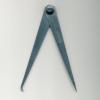
Derivation of the 'Main' suffix in the mining industry.
hilldweller replied to 100GroundsProject's topic in Sheffield History Chat
I've always understood that it refers to pits sunk to exploit the "Barnsley Main" seam of coal, which appeared at different depths according to the location of the pit. The seams generally sloping further down as you move east over the coalfield. Apparently the seam is about 1000 metres deep under Lincoln and is found as far north at Selby, North Yorkshire. I had the opportunity, years ago, to go down Harworth Pit, North Notts, where the Barnsley seam is about 850 metres deep. I went right down into the coal collection hopper by the deepest of the two shafts at around 1000 metres. The heat is amazing especially taking into acount the several megawatts of refrigeration that was in use. All gone now, the shafts were capped and a modern housing estate covers the site.



